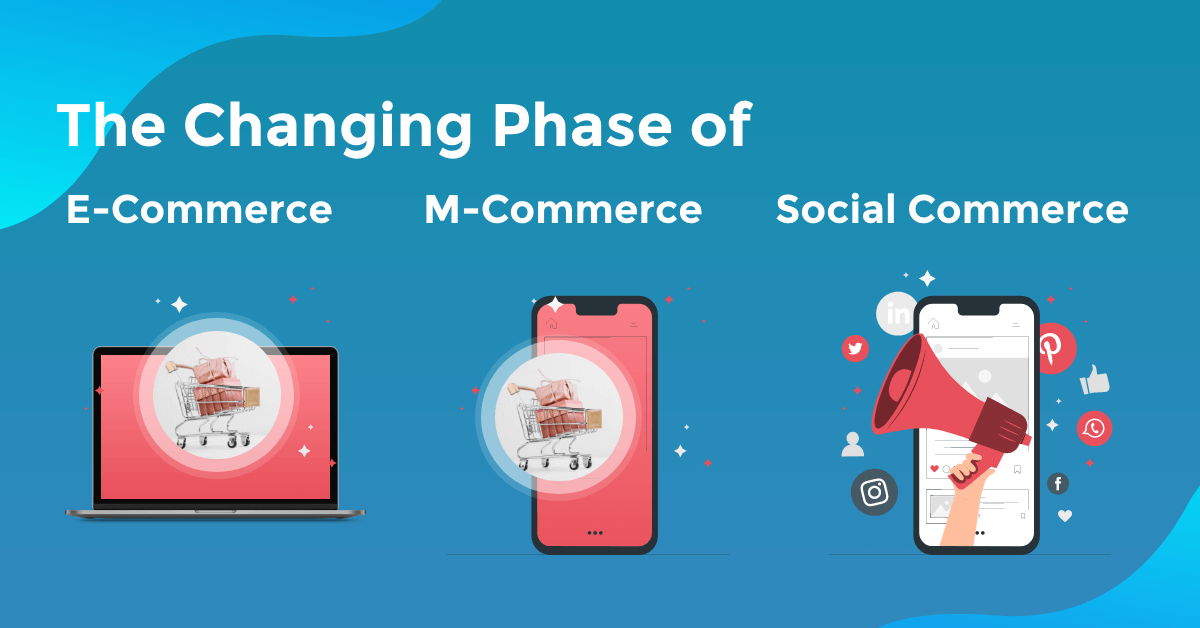Social Commerce is a sub-set of eCommerce that includes social networking, social media, web-based user contributions, and support for social shopping and selling. The term Social Commerce is also used to refer to a set of technologies and practices related to eCommerce and Internet commerce, including online content, search engine optimization, social marketing, e-commerce solutions, and social media tools.
Table of Contents
What Is Social Commerce?
Social commerce is the integration of social media with e-commerce to offer a more specific, simplistic, flexible and enjoyable digital shopping experience. It is also known as social e-commerce or social media commerce in different industries, categories and forms. Social media is a popular destination for millions of users around the world to search for new products, follow brands, interact with them, and even buy products.
Internet and social technology have been growing in popularity in recent years, and it is apparent why. Many consumers enjoy participating in forums, chat rooms and communities that engage them in a manner similar to social networking sites like Facebook. While social networks offer their own advantages, they are increasingly finding their applications being utilized for many things beyond the traditional Internet use. This growth can be seen in every area of the business community, from the local retail stores to the largest businesses in the world.
What Are the Advantages of Social Commerce ?
As more people participate in online consumer interaction via chat rooms, forums, and social networking sites, there are some important questions that arise. How do you know whether your company’s customers will take part in these interactions? And, more specifically, how will they interact with your website and the products or services you are selling? Are you using techniques that will increase their interest?
Social networks have been found to be one of the most effective ways to reach out to potential customers. There are a few key differences between these networks and traditional Internet marketing. These differences include:
- Social Commerce Benefits for your business
- Grow Your Audience Reach through digital media platforms
- User Engagement
- Improve your Conversion Rate & product Sales
- Build Trust With Social User Generated Content
- Instant & easy Checkout Experience
- Maximize Sales & Revenue With Social Commerce Platforms
Websites need to be designed in a way that encourages and inspires the participation of the users. These activities can include commenting, voting, sharing links, creating a profile, adding friends and more. It is important to keep users engaged and connected, and a company should take this to heart when designing their websites. If users are discouraged after a few seconds, the interaction will likely be short-lived. However, if users are actively engaged and participating, then the chances of an exchange will be much higher.
Categories Of Social Commerce
If a site allows the user to leave comments, then the user is more likely to want to participate in these exchanges. If a site does not allow such actions, then they will be less likely to leave their personal contact information or comments. If a site does not allow comments, then the users will be less likely to create a profile, as well.
- Social eCommerce On Social Media
- Social Commerce On Website
With social sites, users often participate in these activities by leaving comments, but not leaving an actual purchase, or transaction. They are participating in social conversations rather than just purchasing or interacting directly with the products or services of the company. This is one of the key areas of social commerce that an Internet marketer needs to take full advantage of. A user may leave comments that show an interest in your product and the company, and at the same time, the company is showing an interest in them.
Social Commerce Trends
The social site is an important tool that can be used to increase the visibility of a company’s products and/or services and generate leads. Once a user has made a purchase or provided some feedback, they will be very likely to return to the site, increasing the likelihood of referrals, which can lead to sales.
- Invest In Social Stories
- Shoppable Visual Galleries
- Mobile-first Optimization
- Affiliation With Influencers
- Create Social Gamification Campaigns
Social sites can also help Internet marketers find new customers. A company can gain some insight into what other users are looking for in terms of the products or services they are looking for. For example, if a user is interested in a certain item, but they have not yet explored it on the Internet, they may find a group of friends that share their interests and they can then look at items they would like to buy. on a social site, rather than going from store to store.
Major Social media Platforms to sell Products
These sites can also help Internet marketers get some feedback from people who do not have a good grasp on the technicalities of the website itself. While a search engine may find the website and search engine optimization can boost rankings, the person searching for information may not be as familiar with the site’s functionality. The person looking for information is often able to make up their own mind, and make a better decision. This is another benefit that is available through social sites.
- Youtube
Although it may not seem like a large effect to most Internet marketers, social sites can really have a great impact on the success of any company. With an increased amount of interaction between both companies and their users, social sites can bring the two together and encourage new customers, increase the quality of business and create a sense of familiarity for the person visiting the site.
Also Read: Paid VS Organic Online Traffic: Why you should use them in tandem?











